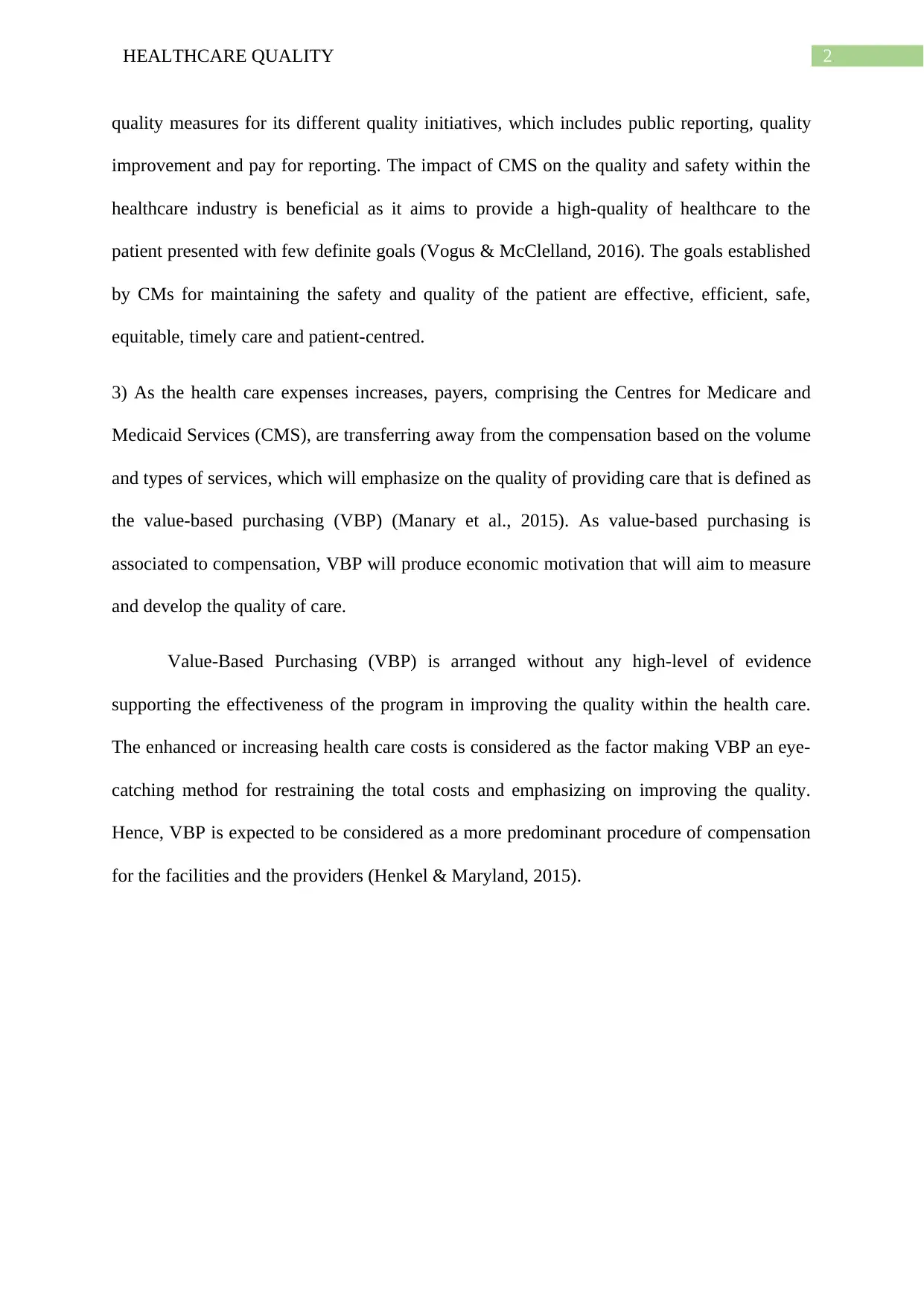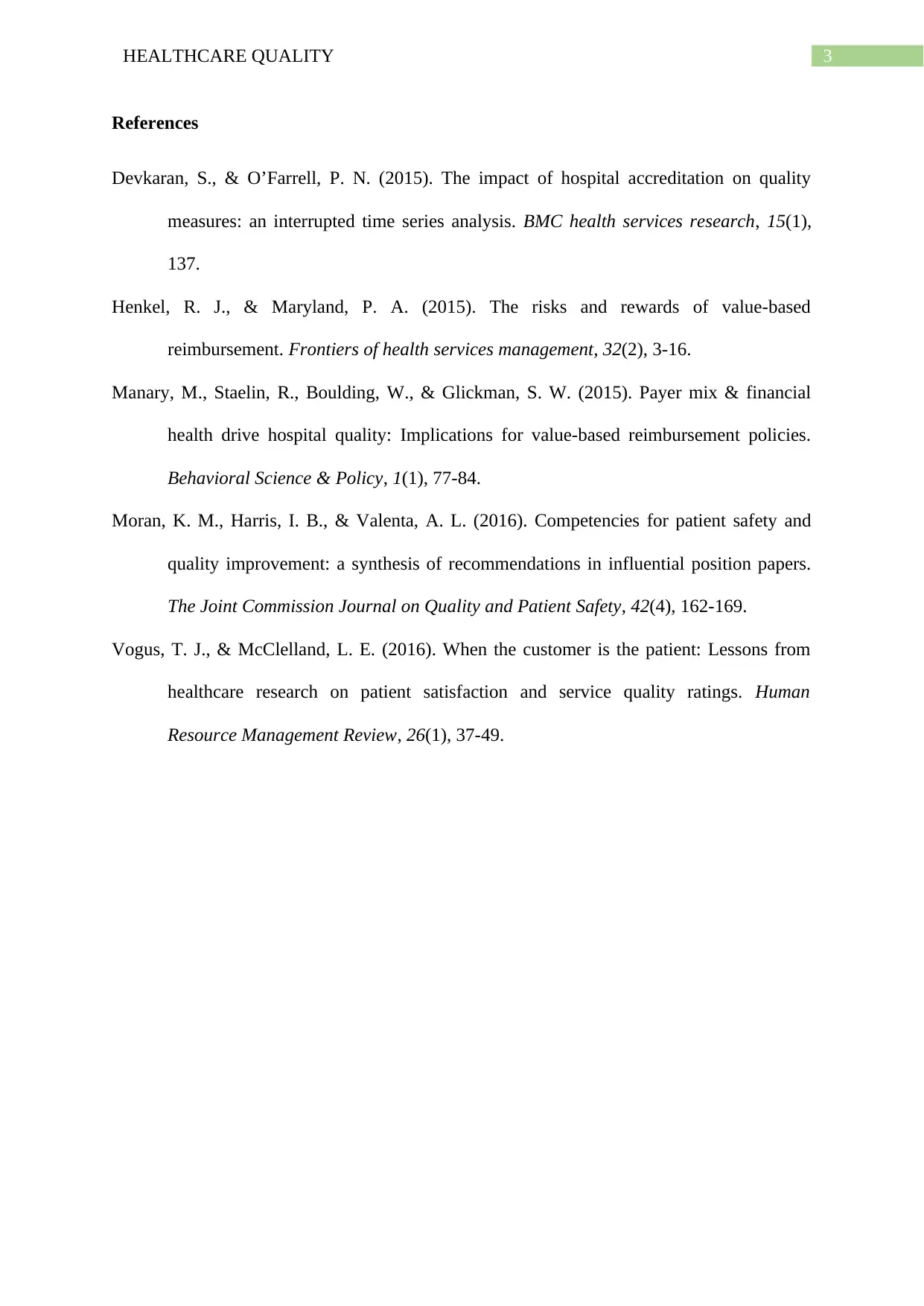Healthcare Quality: Exploring Accreditation, Reimbursement, and Safety
VerifiedAdded on 2022/11/27
|4
|839
|242
Report
AI Summary
This report examines the multifaceted influences on healthcare quality, focusing on three key areas: Joint Commission accreditation, CMS reimbursement requirements, and value-based purchasing (VBP). The Joint Commission, a non-profit organization, sets standards for healthcare organizations, impacting patient safety, medication safety, and overall quality through accreditation. CMS, responsible for government-funded medical coverage, implements quality initiatives and reimbursement models, aiming to ensure high-quality healthcare for beneficiaries, with an emphasis on goals such as effectiveness, efficiency, and patient-centered care. As healthcare costs rise, VBP, tied to compensation, incentivizes quality improvements and cost containment, influencing how providers are compensated and evaluated. The report uses literature to support the observations, providing a comprehensive overview of how these factors shape the healthcare landscape.
1 out of 4











![[object Object]](/_next/static/media/star-bottom.7253800d.svg)